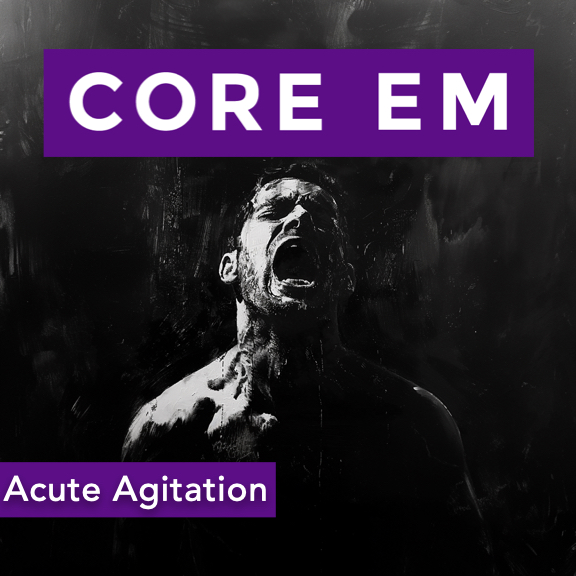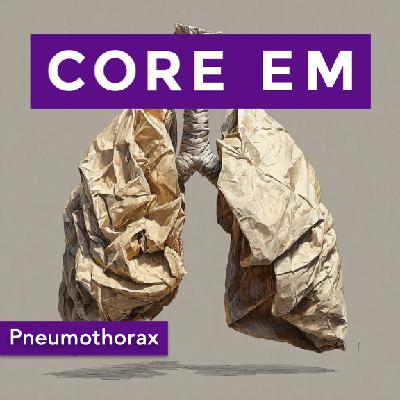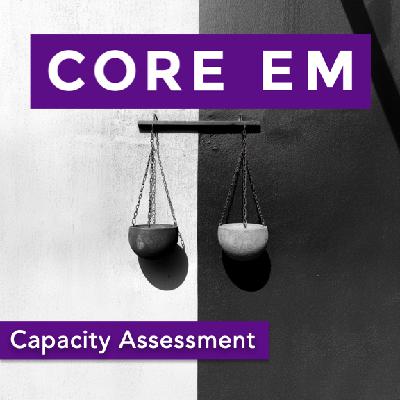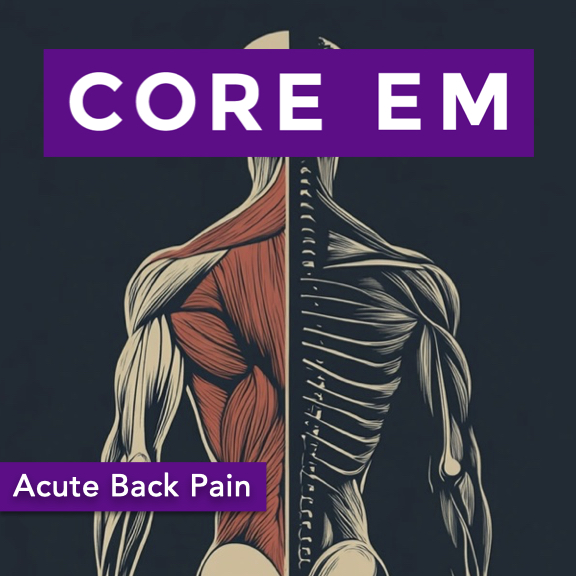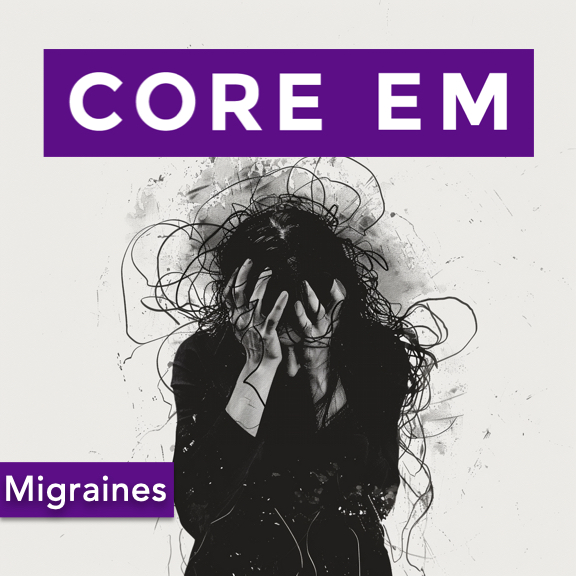Episode 197: Acute Agitation
Description
We discuss an approach to the acutely agitated patient and review medications commonly used.
Hosts:
Jonathan Kobles, MD
Brian Gilberti, MD
Download
Leave a Comment
Tags: Agitation, psychiatry, Toxicology
Show Notes
Background/Epidemiology
•Definition and Scope: Agitation encompasses behaviors from restlessness to severe altered mental states. It’s a common emergency department presentation, often linked with acute medical or psychiatric emergencies.
•Significance: Patients with agitation are at high risk for morbidity and mortality, necessitating prompt and effective management to prevent harm to themselves and healthcare providers.
A Changing Paradigm in Describing Agitation
•Terminology Shift: Move away from terms like ‘excited delirium’ due to their politicization and stigmatization. Focus on describing agitation by severity and underlying causes.
Agitation as a Multifactorial Process
•Complex Nature: Recognize agitation as a result of various factors, including medical, psychiatric, and environmental influences.
Recognizing Agitation
•Signs and Symptoms: Identify agitation early by monitoring for behaviors such as hostility, pacing, non-compliance, and verbal aggression.
Initial Evaluation
•Severity Assessment: Determine the severity of agitation and prioritize reversible causes and life-threatening conditions.
•Diagnostic Steps: Perform vital signs check, blood glucose levels, ECG, and a targeted medical screening exam.
Life Threats
•Immediate Concerns: Identify and address immediate life threats such as hypoxia, hypoglycemia, trauma, and acute neurological emergencies.
Forming a Differential Prior to Treatment
•Prioritization: Severe agitation requires immediate treatment to facilitate further evaluation and reduce risk of harm.
Physician/Staff Safety
•Safety Measures: Ensure personal and team safety by maintaining a calm environment and preparing for potential violence.
Multimodal Approach
•Self-check In: Physicians should mentally prepare and approach the situation calmly to ensure effective management.
•Verbal De-escalation: Use techniques focused on safety, therapeutic alliance, and patient autonomy to manage agitation non-pharmacologically.
Medication Administration
•Oral/Sublingual Medications: Consider oral medications for less severe cases to maintain patient autonomy and avoid invasive procedures.
•IM or IV Medications: Use intramuscular or intravenous medications for rapid control in severe cases.
Specific Medication Regimens
•PO Regimens:
•Medications: Antipsychotics like Zyprexa (olanzapine) 5-10 mg, benzodiazepines like Ativan (lorazepam) 1-2 mg.
•Benefits: Empower patients with a sense of autonomy, avoid injection-related trauma.
•Pharmacokinetics:
•Olanzapine: Onset in 15-45 minutes, peak effect in 1-2 hours, duration 12-24 hours.
•Lorazepam: Onset in 30-60 minutes, peak effect in 2 hours, duration 6-8 hours.
•IV/IM Regimens:
•Medications: Droperidol, haloperidol, midazolam, ketamine.
•ACEP 2023 Guidelines: Recommend droperidol with midazolam or an atypical antipsychotic for severe agitation.
•Pharmacokinetics (IM):
•Haloperidol: IM onset in 15, time to sedation ~25 minutes, can last for 2 hours
•Droperidol: IM onset in 5-10 minutes, duration 2-4 hours but can last as long as 12 hours
•Midazolam: IM onset ~15 minutes, , duration 20 minutes – 2 hours.
•Lorazepam: IM onset ~15-30 minutes, , duration up to 3 hours
•Ketamine: IM onset in ~5 minutes, duration 5-30 minutes.
Special Situations
•Elderly/Dementia: Optimize environment, use non-pharmacologic measures, avoid benzodiazepines to reduce delirium risk.
•Parkinson’s Disease: Avoid antipsychotics that can precipitate a Parkinsonian crisis.
•Autism/Pediatrics: Engage caregivers, create a calming environment, avoid aggressive measures.
•Alcohol Withdrawal: Utilize benzodiazepines and phenobarbital.
Re-dosing and Physical Restraints
•Re-dosing: Use the lowest effective dose, consider continuous monitoring, and reassess frequently.
•Physical Restraints: Employ as a last resort, ensuring close monitoring for any adverse effects.
Final Points
•Clinical Leadership: Physicians should lead with clear communication, planning, and support for the team.
•Continuous Learning: Regular debriefing and assessment after each incident to improve future responses.
Read More


